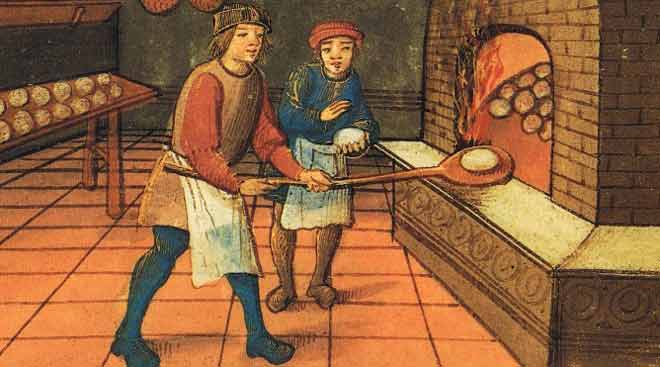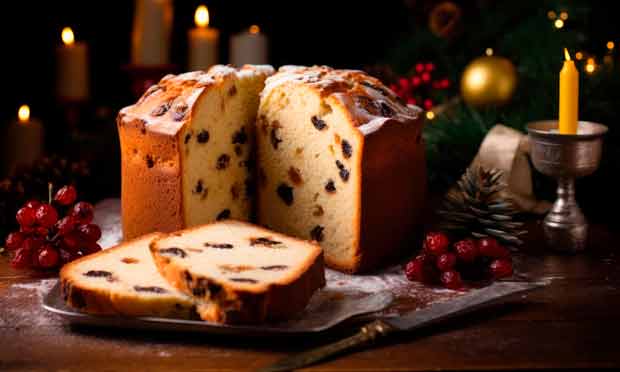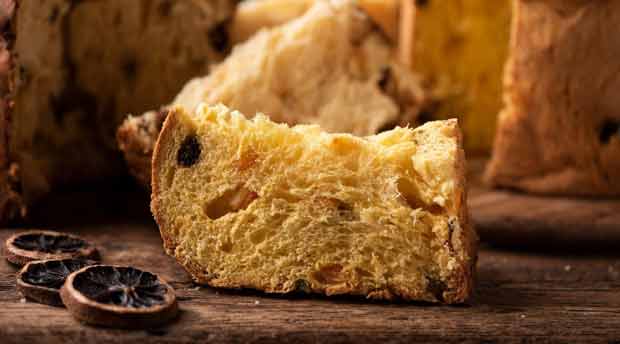History of Panettone: Historical Origins
Dear pastry friends, today I want to take you on a journey through the centuries to discover the origins of our beloved panettone. A journey that begins in the mists of time, where legend and reality merge without leaving us with any certainty about the real origin of this masterpiece.
First Historical References
We begin this journey back to the chronicles of the 15th century, where we meet our beloved dessert for the first time. In the ancient streets of Milan, panettone was not just a dessert, but a true symbol of festivity and luxury, a gastronomic treasure reserved for a lucky few.
In 1470, a document by Giorgio Valagussa sheds light on the history of panettone. In fact, at the time, the “log ritual” was very popular in Milan, a Christmas practice typical of Milanese homes. In this familiar scenario, panettone makes its first official appearance, presented as a special bread, rich in fine ingredients, which shone as a symbol of prosperity and good omen.

Evolution of the Recipe
The journey of panettone continues in 1549, when Cristoforo di Messisbugo, a visionary chef, gives us his interpretation of this delicacy. His recipe, a true culinary tapestry for the time, which involved the use of flour, sugar, eggs, milk and rose water, highlights the importance of leavening and a perfectly round shape. It is at this moment that the artisanal panettone begins to take the shape we know and love today.
Moving forward in time to 1599, we discover a similar recipe in the records of the Borromeo College of Pavia. The introduction of butter, raisins and spices for the preparation of “large breads” makes us understand that we are approaching the modern version of our beloved panettone.
Finally, in 1606, a Milanese-Italian dictionary officially sanctioned the existence of panettone, crystallizing its name and role in Italian gastronomic culture. With this definition, panettone is consolidated not only as a dessert, but as a true pillar of Italian tradition.
The Legend of Toni
There are also several legends that have been handed down to us and are lost over time, such as that of Toni, a humble boy whose cunning and culinary talent gave life to one of the sweetest legends. Imagine a ruined Christmas dinner, a burnt dessert, and the desperation of the guests. It is in this scenario that Toni, with a touch of genius, creates an extraordinary dessert, not only saving the evening but giving life to a tradition. “Pan del Toni” soon became synonymous with celebration and joy, a symbol of resilience and creativity.

The Legend of Ulivo
Let’s now move on to the story of Ulivo, a falconer who, out of love, turns into a pastry innovator. To win the heart of a baker’s daughter, Ulivo experiments with luxurious ingredients, giving life to a dessert that today we call panettone. This narrative not only celebrates human ingenuity but also the power of love to inspire extraordinary creations.
The Legend of Sister Ughetta
Finally, I present to you Sister Ughetta, a nun in a poor convent, who with a few but significant ingredients creates a Christmas dessert capable of bringing joy and hope. Her story reminds us that, sometimes, simplicity and humility can generate the most memorable and delicious creations, like the artisanal panettone that we adore.
Diffusion in Italy
From the second half of the nineteenth century, the art of panettone began to flourish. Thanks to influential personalities such as Giovanni Ricordi, panettone becomes a symbol of gratitude and recognition, going beyond the borders of Milan to conquer all of Italy. Italian pastry shops, each with its own unique interpretation, begin to experiment with the recipe, enriching it with regional variations and secrets passed down from generation to generation.
The introduction of mother yeast, combined with the more generous use of eggs and butter, marked a turning point in the preparation of panettone, making it softer, more aromatic and irresistible. This evolution encouraged the use of special molds which helped create the iconic shape that we immediately recognize today. From here on, production will become predominantly industrial with large-scale mass distribution. However, there are various local companies that still create panettone by hand and export their masterpieces literally all over the world, just like the Panettoni Duci which are renowned for their taste.

Diffusion in the World
During the 20th century, panettone began its journey beyond the Italian borders, becoming an ambassador of Italian culture and taste in the world. Countries such as the United States, Brazil, Canada, and many others in Europe and Asia have enthusiastically welcomed this dessert, integrating it into their holiday traditions. Panettone is not only appreciated for its unique flavour, but also for its ability to bring people together in moments of celebration and conviviality.
Today, famous panettones can be found in every corner of the world, from small artisanal pastry shops to large supermarket chains. Their global presence is testimony to the ability of panettone to adapt and enchant different cultures and palates despite the recent and infamous review by a Times journalist who defined it as “too sweet, difficult to digest: pudding is better”. An opinion which, however, is not reflected in the constantly growing sales even in Anglo-Saxon countries. In any case, with each slice of this dessert, we celebrate a history rich in traditions, innovations and narratives that have made panettone a true Italian cultural heritage.


Visita il nostro e-shop e scopri tanti prodotti a prezzi vantaggiosi!